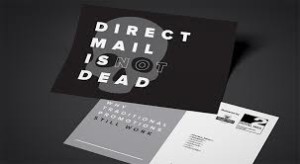The law of attraction can be applied to almost anything in life if you really think about it. So why not make your leaflets, flyers or magazine cover an instant attraction feature.
 As a part of the direct marketing mix, magazine and leaflet distribution is one of the most successful methods of building a new business or expanding and consolidating an existing one, as we all know you only get one chance to make a good first impression. It’s that law of attraction thing again!
As a part of the direct marketing mix, magazine and leaflet distribution is one of the most successful methods of building a new business or expanding and consolidating an existing one, as we all know you only get one chance to make a good first impression. It’s that law of attraction thing again!
Research has shown that over 95% of people receive and see a magazine or leaflet that lands on their doormat.
Research has also revealed that over 55% of adults will keep a door drop leaflet for more than a week and over 80% keep the magazine for even longer; in fact, door drop leaflets are kept for an average of 38 days, longer than any other piece of information that comes through the letterbox, except for utility bills.
These distributed leaflets & magazines are kept in various places in a household.
There is the holding area where they are held in abeyance, waiting to be dealt with by various members of the household. A random holding area such as a convenient space on a cabinet or mantle-piece or a drawer, where they are kept after being read and wait to be read again.
Finally, there is the display area. The display area is the area where leaflets are on permanent display.
These days a domestic appliance has become the most prominent display area in most households; this is the family sized fridge freezer. It is on this display area leaflets should aspire to be placed, and, if possible, aspire to take pride of place in this display area.
The family fridge is a display place for all sorts of material, shopping list, reminders of school runs, and many other pieces of information required to keep a busy household functioning. The competition for space on this display board is fierce enough and it is made more competitive because most people will use a fridge magnet to display information they think worth keeping.
There are companies in the market who manufacture illustrated fridge magnets, but I feel they do not lend themselves to leaflets for distribution either for cost or for weight. However, you can do something to have your leaflet displayed on the fridge door, and it will not add any cost to the production of your leaflet.
If your offer is an attractive offer and your message conveys this, why not add a line at the foot of the copy and suggest they put it on their fridge door to remind them to contact you when the time is right. Make the law of attraction work for you.
Most people have fridge magnets and may be happy to put a well-designed and printed leaflet on this very important area in the home.
Just ask, besides what have you got to lose?




